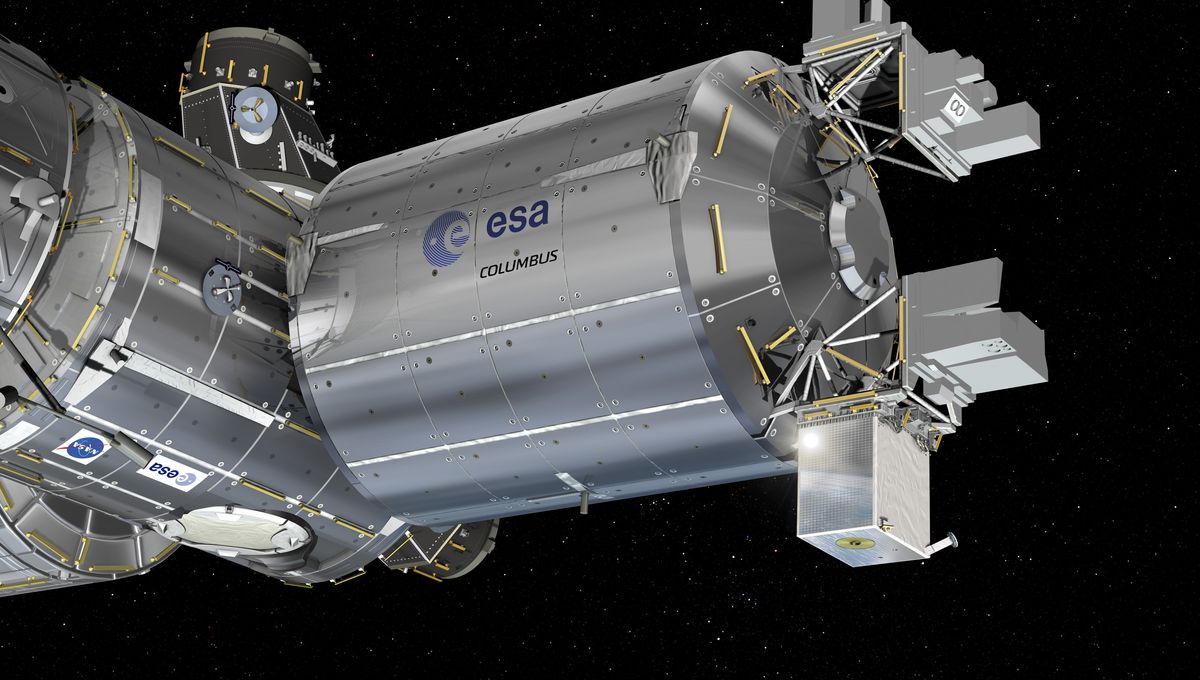
The European Space Agency (ESA) has launched ACES, or the Atomic Clock Ensemble in Space, to the International Space Station (ISS). This project will measure time with a precision never reached before in space. The goal is to use this cutting-edge tech in both testing established theories and looking at what might exist behind them.
The main aim is to test Einstein’s special relativity and general relativity, including the famous effect of time dilation. The faster something goes, the slower its internal clock –that’s from special relativity. The deeper you are in a gravitational field, the slower your clock goes. That means a clock on the ISS will measure a different time, because it is moving quite fast and is further away from the center of the Earth.
Both these effects are tiny, and they almost cancel each other out. The Earth’s gravitational pull is small, and given that the ISS moves at 8 kilometers (5 miles) per second, time dilates by a small fraction of a second compared to Earth.
This is not an effect that is appreciable by us, but for atomic clocks, it is. The times measured on the ground and in space are going to diverge over the 30 months these experiments will run. Over that period, ACES will aim to collect continuous measurement over at least 10 sessions of 25 days each. The ACES clock signals will be sent to Earth with two different methods, where they will be compared with clocks on the ground.
“We are thrilled by the opportunities that the clock network established by ACES will bring for fundamental physics research, geodesy applications and global timekeeping,” Luigi Cacciapuoti, the ACES project scientist at ESA, said in a statement.
“ACES is today responding to an urgent need in the scientific community and will surely play a key role in pushing towards the re-definition of the standard unit of time – the so-called SI second –, in terms of an optical frequency standard.”
The best clocks ever developed are known as optical clocks, and their beat has a precision of the order of a few parts per one billion billion (1018), and that is getting better all the time. The ACES network will be 10 times less precise, but when it comes to satellite systems, this is a precision that has never been achieved before.
This precision will allow tests of time dilation with the highest precision yet, and it will allow researchers to test possible variations in fundamental constants. It could also be used to probe some of the possible mass ranges of dark matter, a hypothetical substance that permeates the universe, and to study the internal properties of our planet.
ACES has two different cutting-edge clocks. PHARAO (Projet d’Horloge Atomique à Refroidissement d’Atomes en Orbite), a cesium atomic clock that is similar to standard atomic clocks on Earth, but thanks to being in microgravity, is much smaller than what we have here on the planet. The other is SHM (Space Hydrogen Maser), which instead uses microwaves and a transition in hydrogen to tell time. A maser is the microwave equivalent of a laser.
“ACES is a highly sensitive apparatus made of intricate and interconnected subsystems that must work in harmony. The team faced many challenges and had to devise clever solutions,” said Thomas Peignier, ACES Principal Engineer. “For example, to prevent the clocks from being damaged by exposure to magnetic fields, we conducted magnetic surveys before moving ACES anywhere, used special equipment to protect ACES during testing, and all tools, electronic devices and metallic pieces, down to the very nuts and bolts, are measured and demagnetised if necessary before they go near ACES.”
“It is high-precision work for a high-precision facility.”
Combined together, these two clocks would only lose a second every 300 million years. The system will be attached by the robotic arm of the ISS to the exterior of the Columbus module.
Source Link: We're About To Achieve The Most Accurate Time Signal Ever Transmitted From Space